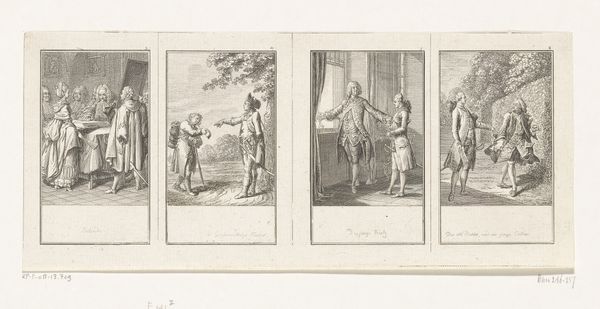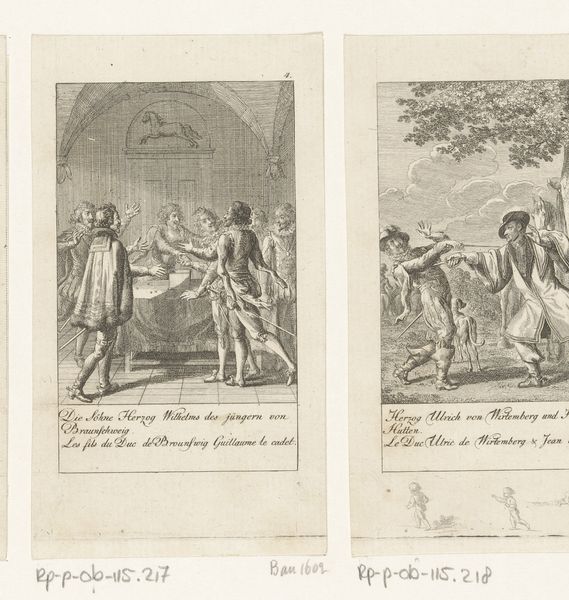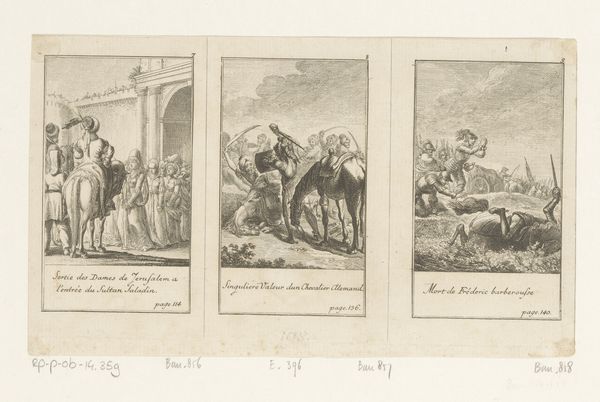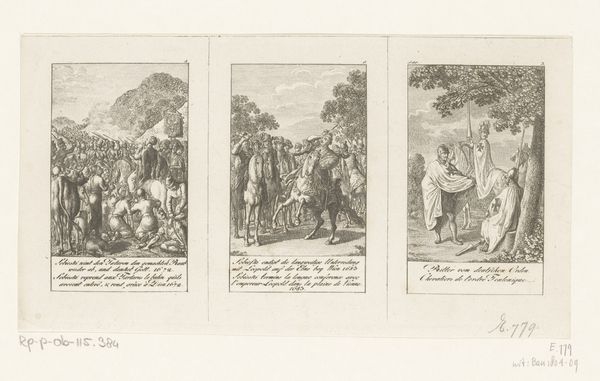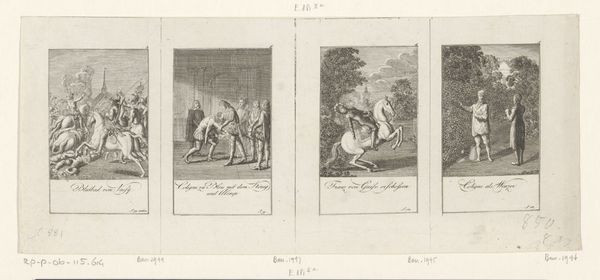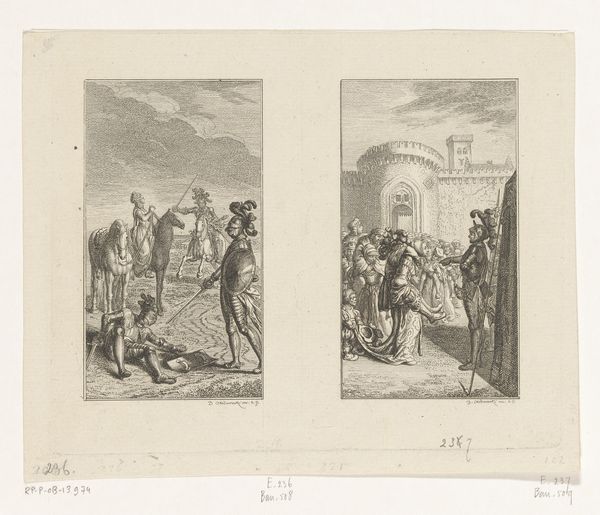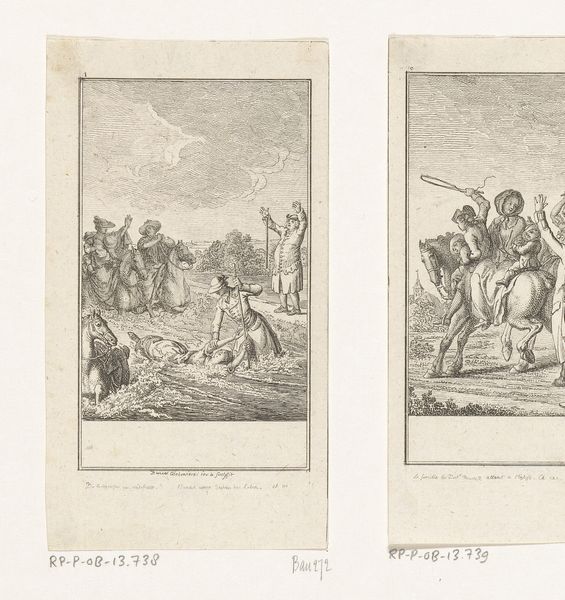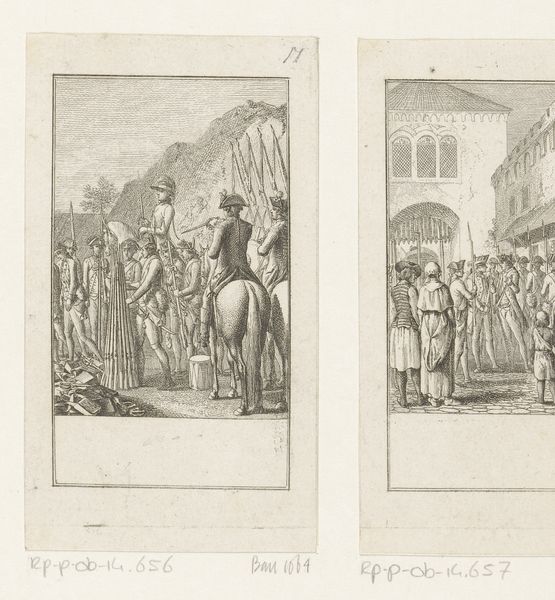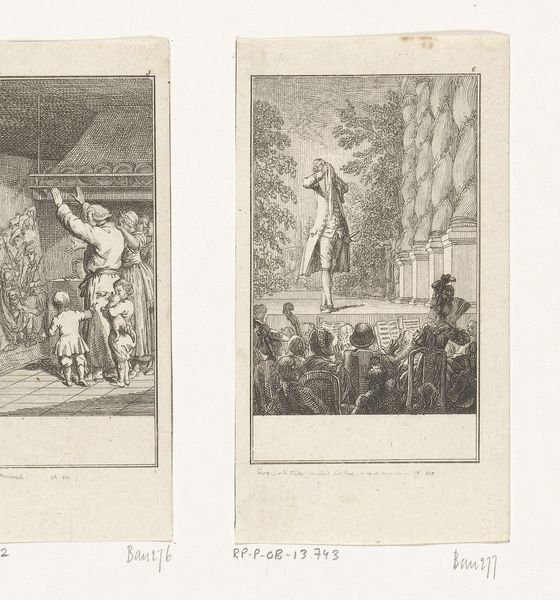
Dimensions: height 149 mm, width 185 mm
Copyright: Rijks Museum: Open Domain
Curator: This print, "Twee scènes uit Bürger's Gedichten" by Daniel Chodowiecki, created in 1778, offers a fascinating look into the artistic processes of the late 18th century. Editor: It's amazing how much detail Chodowiecki packed into these two scenes using just engraving. It’s also curious how the scenes relate. What can you tell me about how this work would be viewed from a materialist lens? Curator: Focusing on the materiality and social context, we must ask: what did printmaking signify in 1778? Engravings allowed for mass production, making art accessible beyond the elite. This print, therefore, acts as a vehicle for disseminating ideas. How do the materials used – the metal plate, the ink, the paper – democratize art consumption? Editor: So it’s not just about what's depicted, but how widely those images could spread thanks to the technique? What do you think the subjects tell us about the relationship between making art and distributing it to the masses? Curator: Exactly! Consider Bürger's poems as the content being industrialized. The poem, through Chodowiecki's visual interpretation and the engraving process, enters wider circulation. It removes it from the singular, precious art object into a form available to a larger public. We see two very different sides of society in the print. Do you notice the disparity between those gathered around the performer, versus the negotiation between wealthier people on the right? It looks like a social critique… Editor: I do see the difference. I had been drawn in mostly by the composition, but seeing it through that production and consumption lens makes me consider who had access to what kind of narratives, and how that access might reinforce social standing and cultural values at the time. Curator: Indeed. By considering the engraving's material production and distribution, we see it not just as an aesthetic object, but as a tool shaping social and cultural realities. It reveals how art, labor, and consumption intersect. Editor: That’s so interesting; it completely changes how I see the role of the artist in that period. Thank you for that. Curator: My pleasure. This materialist lens urges us to analyze not just what the artwork depicts, but the whole system in which it was made and circulated.
Comments
No comments
Be the first to comment and join the conversation on the ultimate creative platform.
